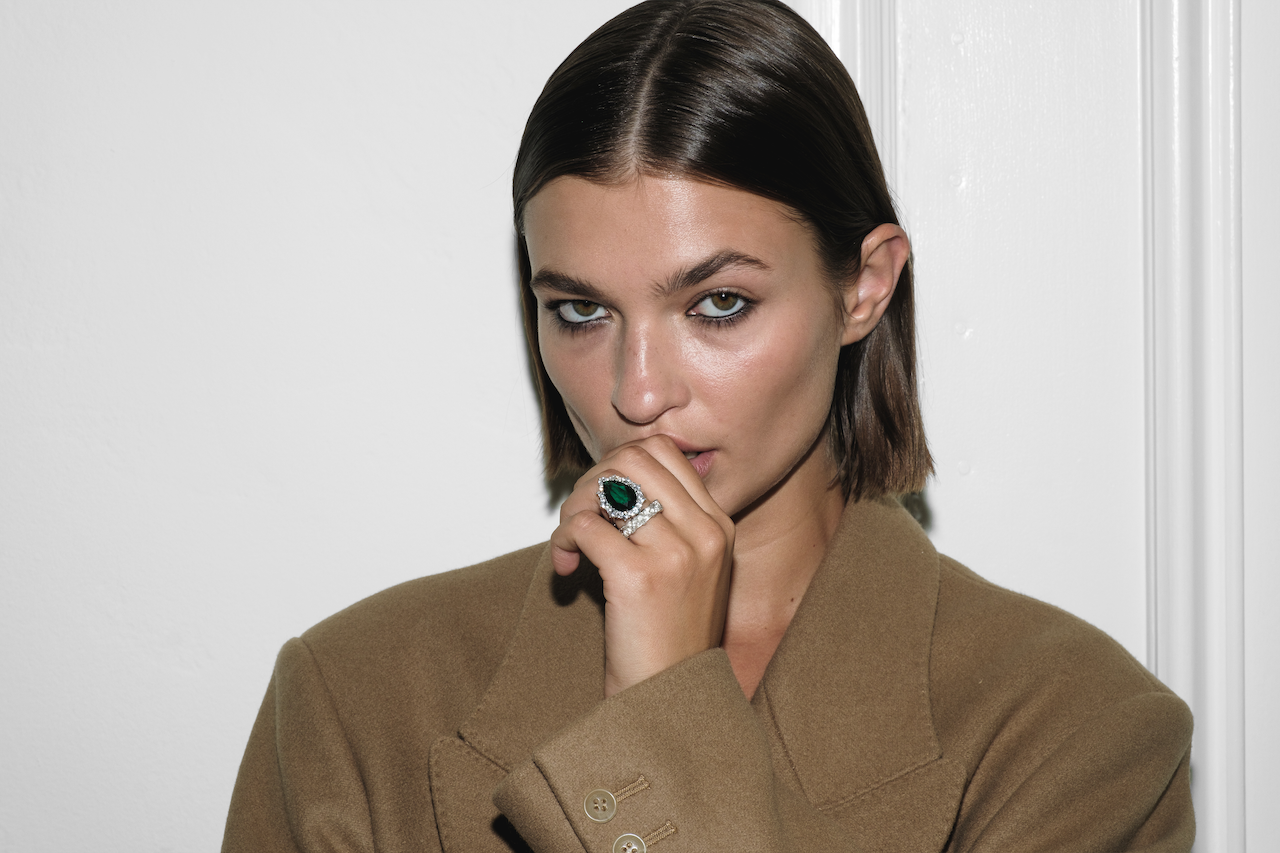DMTV Milkshake: Meg Strachan on the Truth About Entrepreneurship - 3 minutes read

Meg Strachan’s grandmother is the namesake for her brand of lab-grown gemstones: Dorsey. It’s a fitting tribute for a woman who, Strachan says, taught her about the importance of elegance. “My grandmother, Dorsey, was married for 73 years to my grandfather, Howard,” she says. “And she had a wedding ring, but she was always changing her rings, and some days she wouldn’t wear any ring at all. I always loved that – I thought that it was very modern, and I thought it was interesting that she would buy rings for herself. Some of them were expensive and some of them were not expensive at all. My grandmother had fine jewelry and costume jewelry – and I could never find the types of pieces that she gave to me.”
That perspective has informed Dorsey, the brand, from the start. When Strachan started out, she was the odd jewelry-seeker who wasn’t looking for a wedding or engagement ring, a spot in the marketplace she found curiously underserved. “When I started my company, I was already married, and I didn’t have any interest at that time in the bridal market,” she says in this week’s Milkshake. “I was looking for beautiful tennis bracelets and Revere necklaces and archive-feeling pieces with design and craftsmanship from the ’20s and ’30s and ’40s. And they were very difficult to find.”
Enter Dorsey, with pieces like the Spencer cocktail ring, featuring a 5.80-carat lab-grown emerald with three carats of lab-grown white sapphires, or the (currently sold-out) Halston tennis bracelet with three rows of lab-grown stones. The brand is built on the belief that the ethical and environmental problems associated with natural gemstones are so significant that the future of the industry lies elsewhere – specifically, in lab-grown stones. Coming to terms with this realization, she says – which in many ways goes against the conventional wisdom of this most hidebound of industries – was central to her launch. “Many people told me [lab-grown stones] didn’t make sense, but for the consumer, they do make sense,” she says. “And the lab-grown jewelry market is really just getting started.” For more, tune in!
Diana Ostrom, who has written for Wallpaper, Interior Design, ID, The Wall Street Journal, and other outlets, is also the author of Faraway Places, a newsletter about travel.
Milkshake, DMTV (Design Milk TV)’s first regular series, shakes up the traditional interview format by asking designers, creatives, educators and industry professionals to select interview questions at random from their favorite bowl or vessel. During their candid discussions, you’ll not only gain a peek into their personal homeware collections, but also valuable insights into their work, life and passions.
Source: Design-milk.com
Powered by NewsAPI.org